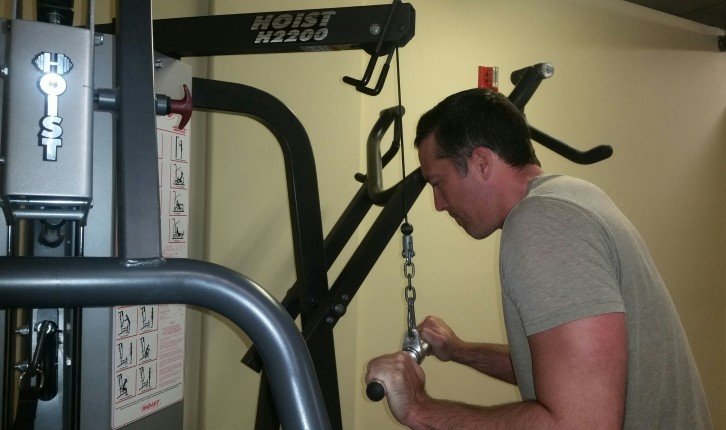Let’s take a moment to unravel the meaning of “fit” for a woman. In a world that often emphasizes stereotypes and unreal expectations, understanding what it truly means for a woman to be fit goes beyond physical appearance. It encompasses a holistic approach, embracing physical fitness, mental well-being, and self-acceptance. So, let’s embark on a journey to explore the multifaceted dimensions of what it means for a woman to be fit, challenging preconceived notions and celebrating the diversity that exists within us all.
Body Image and Fit
Societal Expectations
Societal expectations play a significant role in shaping the definition of “fit” for women. The media often portrays a narrow and unrealistic standard of beauty, emphasizing a slim and toned physique. These expectations can lead to feelings of inadequacy and self-doubt for many women. It is important to remember that everyone’s body is unique, and there is no one-size-fits-all definition of what it means to be fit.
Media Influence
The media’s influence is pervasive and can have a profound impact on a woman’s body image and perception of fitness. Images of airbrushed models and celebrities can create unattainable beauty standards that can be detrimental to self-esteem and mental health. It is vital to recognize that these images are often heavily manipulated and do not accurately represent the range of diverse bodies that exist in reality.
Cultural Differences
Cultural differences also play a significant role in defining what is considered fit for women. Various cultures prioritize different body shapes and sizes, highlighting the importance of embracing diversity and rejecting a one-size-fits-all approach. It is crucial to respect and celebrate these cultural differences rather than imposing a singular standard of fitness.
Physical Fitness and Health
A Holistic Approach
Physical fitness extends beyond just the physical aspects of health. It entails a holistic approach that includes cardiovascular endurance, muscular strength and endurance, flexibility, and body composition. Focusing on all these components is essential for overall well-being.
Cardiovascular Endurance
Cardiovascular endurance refers to the ability of the heart, lungs, and blood vessels to supply oxygen to the muscles during physical activity. Engaging in activities such as brisk walking, running, swimming, or cycling can improve cardiovascular health and promote overall fitness.
Muscular Strength and Endurance
Muscular strength and endurance are crucial for functional movement and daily activities. Incorporating resistance training exercises, such as lifting weights or using resistance bands, can help build and maintain muscle strength and endurance.
Flexibility
Flexibility is essential for maintaining a full range of motion in joints and preventing injuries. Practices like yoga, stretching exercises, and Pilates can improve flexibility and promote muscle balance.
Body Composition
Body composition refers to the proportion of fat, muscle, and other tissues in the body. It is important to focus on achieving a healthy body composition rather than solely focusing on weight. Balancing a nutritious diet and regular exercise can help maintain a healthy body composition.
Mental and Emotional Well-being
Confidence and Self-esteem
Fitness is not just about physical appearance but also about mental and emotional well-being. Engaging in regular exercise and maintaining a healthy lifestyle can boost confidence and self-esteem. Physical activity releases feel-good endorphins, reduces stress, and improves overall mood.
Body Positivity
Body positivity emphasizes self-acceptance and embracing one’s unique body. It encourages women to appreciate and love their bodies regardless of shape, size, or perceived flaws. Promoting a culture of body positivity can have a positive impact on mental health and help women redefine their definition of fitness.
Self-care and Self-love
Taking time for self-care is crucial for overall well-being. Engaging in activities that bring joy, relaxation, and rejuvenation is an important part of maintaining mental and emotional health. Practicing self-love and self-compassion is vital for cultivating a positive relationship with one’s body.
Balance and Stress Management
Balancing different aspects of life, including work, family, and personal well-being, is essential for overall health and fitness. High levels of stress can negatively impact physical and mental well-being. Incorporating stress management techniques, such as meditation, deep breathing exercises, or engaging in hobbies, can help maintain balance and improve overall fitness.
Fitness Goals and Personal Preferences
Weight Loss or Maintenance
For some women, weight loss or maintenance may be a fitness goal. It is important to approach weight-related goals with a focus on overall health rather than striving for unrealistic ideals. Setting achievable goals, incorporating regular exercise, and maintaining a balanced and nutritious diet can support healthy weight loss or maintenance.
Toning and Sculpting
Toning and sculpting refer to building lean muscle mass and enhancing muscle definition. This can be achieved through a combination of strength training exercises that target specific muscle groups and a balanced diet. It is important to remember that everyone’s body responds differently to exercise, and results may vary.
Building Muscle and Strength
Building muscle and strength is often associated with weightlifting and resistance training. Engaging in such activities can improve overall strength and functional movement. Incorporating progressive overload and allowing for proper rest and recovery is essential when aiming to build muscle and strength.
Improving Athletic Performance
For women involved in sports or athletic activities, improving performance may be a fitness goal. Specific training programs tailored to the demands of the particular sport or activity can help enhance performance. Seeking guidance from a qualified coach or trainer can be beneficial in reaching athletic goals.
Overall Health and Wellness
Ultimately, the most important fitness goal for women should be overall health and wellness. Prioritizing regular physical activity, maintaining a balanced diet, and practicing self-care are key components of achieving optimal health and well-being.
The Role of Exercise and Physical Activity
Types of Exercise for Women
There are numerous types of exercise suitable for women, including aerobic exercises, strength training, flexibility exercises, and functional training. Engaging in a variety of exercises ensures a well-rounded fitness routine and allows for targeting different fitness components.
The Importance of Regular Physical Activity
Regular physical activity is crucial for maintaining good health and preventing chronic diseases. It can improve cardiovascular health, strengthen bones and muscles, enhance mental well-being, and contribute to overall longevity. Aim for at least 150 minutes of moderate-intensity aerobic activity or 75 minutes of vigorous-intensity activity per week.
Finding Activities You Enjoy
Maintaining a regular exercise routine becomes much easier when you enjoy the activities you engage in. Experiment with different types of exercise and find what brings you joy and satisfaction. Whether it’s dancing, hiking, swimming, or any other physical activity, embracing activities you enjoy will help you stay motivated and committed to your fitness journey.
Exercise for Different Life Stages
Women’s exercise needs may vary depending on the stage of life they are in. Pregnancy, postpartum, menopause, and aging can all bring unique considerations. Consulting with healthcare professionals and fitness experts who understand these specific needs can help develop appropriate exercise programs for each life stage.
Diet and Nutrition in Relation to Fit
Balanced and Nutrient-Dense Eating
A balanced and nutrient-dense diet plays a crucial role in achieving and maintaining fitness goals. Focus on consuming a variety of whole foods that provide essential nutrients, including fruits, vegetables, lean protein, whole grains, and healthy fats.
Understanding Macronutrients
Macronutrients, including carbohydrates, proteins, and fats, are the main sources of energy for the body. Balancing macronutrient intake according to individual needs and goals is essential. Consultation with a registered dietitian can provide personalized guidance on macronutrient distribution.
The Significance of Hydration
Staying hydrated is essential for overall health and optimal physical performance. Water plays a vital role in various bodily functions, including regulating body temperature, lubricating joints, and transporting nutrients. Aim to drink an adequate amount of water throughout the day, especially during physical activity.
Mindful Eating and Intuitive Eating
Practicing mindful eating and intuitive eating can help develop a healthy relationship with food. Being present and attentive while eating, listening to hunger and fullness cues, and honoring cravings in moderation are important aspects of intuitive eating. This approach promotes enjoyment of food while nurturing a balanced and healthy diet.
Challenges and Obstacles Women Face
Time Constraints
Many women face time constraints due to numerous responsibilities, including work, family, and caring for others. Finding time for exercise and self-care can be challenging. Prioritizing physical activity and incorporating it into daily routines, such as scheduling workouts or engaging in active breaks, can help overcome time constraints.
Societal Pressures
Societal pressures to conform to certain beauty standards can have a negative impact on women’s fitness journeys. It is important to recognize that everyone’s definition of fitness is unique and to focus on individual health rather than external validation. Surrounding yourself with a supportive network can help combat societal pressures and maintain a positive mindset.
Work-Life Balance
Maintaining a healthy work-life balance can be difficult, leaving little time and energy for exercise and self-care. It is crucial to prioritize self-care and allocate time for physical activity. Setting realistic expectations, practicing time management, and seeking support from family and friends can aid in achieving a better work-life balance.
Physical Conditions and Hormonal Factors
Physical conditions and hormonal factors can present additional challenges for women’s fitness. Conditions like polycystic ovary syndrome (PCOS), endometriosis, and menopause can impact energy levels, metabolism, and motivation. Seeking guidance from healthcare professionals and adapting exercise and nutrition plans accordingly can help navigate these challenges.
Overcoming Barriers and Building a Supportive Community
Setting Realistic Expectations
Setting realistic expectations is crucial for long-term success in fitness. It is essential to understand that progress takes time and that everyone’s journey is unique. Focusing on small, achievable goals and celebrating each milestone along the way can provide motivation and support.
Creating a Sustainable Routine
Creating a sustainable fitness routine is key to maintaining long-term consistency. Incorporating activities that you enjoy, setting a realistic schedule, and gradually increasing intensity or duration can help build a routine that fits into your lifestyle. Prioritizing rest and recovery is also important for preventing burnout and injury.
Finding Supportive Networks
Building a supportive community can greatly impact your fitness journey. Surrounding yourself with like-minded individuals who share similar goals can provide motivation, accountability, and encouragement. Joining fitness classes, online communities, or finding workout buddies can help establish a network of support.
Seeking Professional Guidance
Seeking professional guidance from qualified fitness trainers, registered dietitians, and healthcare professionals can provide valuable insights and personalized recommendations. They can help create exercise plans, design nutrition strategies, and address specific challenges, ensuring that your fitness journey is safe and effective.
Celebrating Diversity and Individuality
Appreciating Different Body Types
It is crucial to appreciate and celebrate the diversity of body types. Fitness and health come in various shapes and sizes, and no one body type is superior to another. Embracing and accepting different body types promotes inclusivity and fosters a positive environment for all women.
Embracing Unique Strengths
Each woman possesses unique strengths, both physical and non-physical. Celebrating one’s individual strengths, whether they are physical abilities, mental resilience, or other qualities, strengthens the journey towards overall fitness. Embracing these unique strengths contributes to a positive self-image and greater self-acceptance.
Recognizing Non-Physical Aspects of Fit
While physical fitness is essential, it is equally important to recognize the non-physical aspects of being fit. Mental and emotional well-being, personal growth, and self-care are vital factors that contribute to overall fitness and should not be overlooked. Balancing physical, mental, and emotional wellness ensures a holistic approach to fit.
Conclusion
Fit means different things to different women, and it should not be confined to societal expectations or external standards. Embracing a holistic view of fitness that incorporates physical, mental, and emotional well-being is key. Setting personalized goals, finding activities that bring joy, and nurturing a positive relationship with your body are essential for a sustainable and fulfilling fitness journey. Celebrating diversity, building supportive networks, and prioritizing self-care will empower women to redefine fitness on their own terms.



